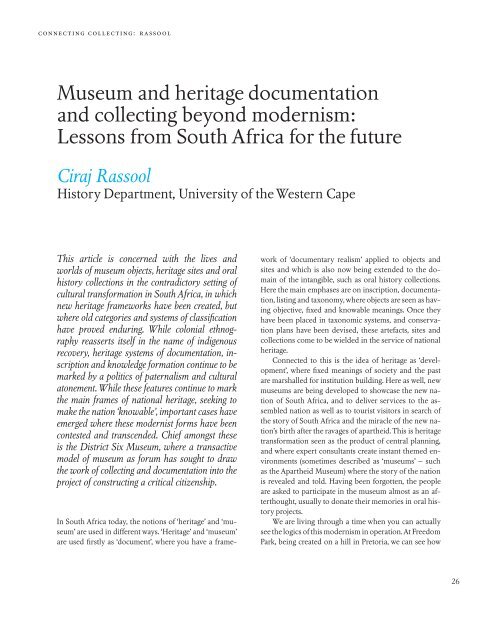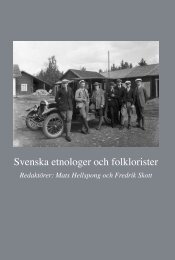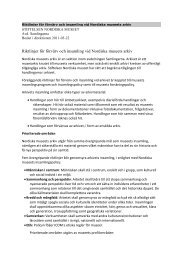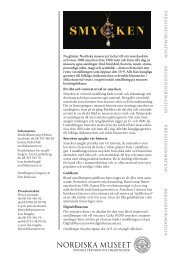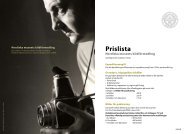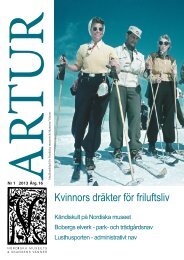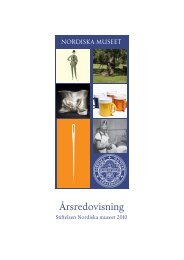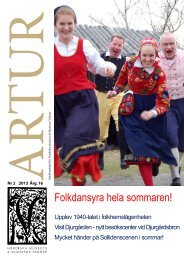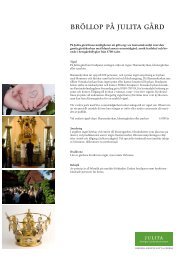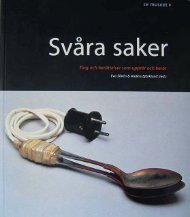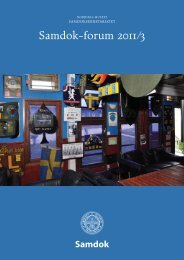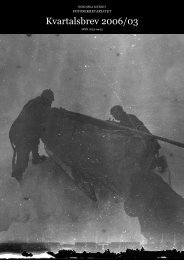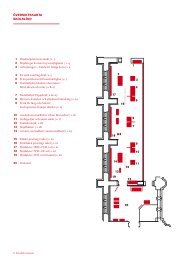Samdok - Nordiska museet
Samdok - Nordiska museet
Samdok - Nordiska museet
Create successful ePaper yourself
Turn your PDF publications into a flip-book with our unique Google optimized e-Paper software.
connecting collecting: rassool<br />
Museum and heritage documentation<br />
and collecting beyond modernism:<br />
Lessons from South Africa for the future<br />
Ciraj Rassool<br />
History Department, University of the Western Cape<br />
This article is concerned with the lives and<br />
worlds of museum objects, heritage sites and oral<br />
history collections in the contradictory setting of<br />
cultural transformation in South Africa, in which<br />
new heritage frameworks have been created, but<br />
where old categories and systems of classification<br />
have proved enduring. While colonial ethnography<br />
reasserts itself in the name of indigenous<br />
recovery, heritage systems of documentation, inscription<br />
and knowledge formation continue to be<br />
marked by a politics of paternalism and cultural<br />
atonement. While these features continue to mark<br />
the main frames of national heritage, seeking to<br />
make the nation ‘knowable’, important cases have<br />
emerged where these modernist forms have been<br />
contested and transcended. Chief amongst these<br />
is the District Six Museum, where a transactive<br />
model of museum as forum has sought to draw<br />
the work of collecting and documentation into the<br />
project of constructing a critical citizenship.<br />
In South Africa today, the notions of ‘heritage’ and ‘museum’<br />
are used in different ways. ‘Heritage’ and ‘museum’<br />
are used firstly as ‘document’, where you have a frame-<br />
work of ‘documentary realism’ applied to objects and<br />
sites and which is also now being extended to the domain<br />
of the intangible, such as oral history collections.<br />
Here the main emphases are on inscription, documentation,<br />
listing and taxonomy, where objects are seen as having<br />
objective, fixed and knowable meanings. Once they<br />
have been placed in taxonomic systems, and conservation<br />
plans have been devised, these artefacts, sites and<br />
collections come to be wielded in the service of national<br />
heritage.<br />
Connected to this is the idea of heritage as ‘development’,<br />
where fixed meanings of society and the past<br />
are marshalled for institution building. Here as well, new<br />
museums are being developed to showcase the new nation<br />
of South Africa, and to deliver services to the assembled<br />
nation as well as to tourist visitors in search of<br />
the story of South Africa and the miracle of the new nation’s<br />
birth after the ravages of apartheid. This is heritage<br />
transformation seen as the product of central planning,<br />
and where expert consultants create instant themed environments<br />
(sometimes described as ‘museums’ – such<br />
as the Apartheid Museum) where the story of the nation<br />
is revealed and told. Having been forgotten, the people<br />
are asked to participate in the museum almost as an afterthought,<br />
usually to donate their memories in oral history<br />
projects.<br />
We are living through a time when you can actually<br />
see the logics of this modernism in operation. At Freedom<br />
Park, being created on a hill in Pretoria, we can see how<br />
26


